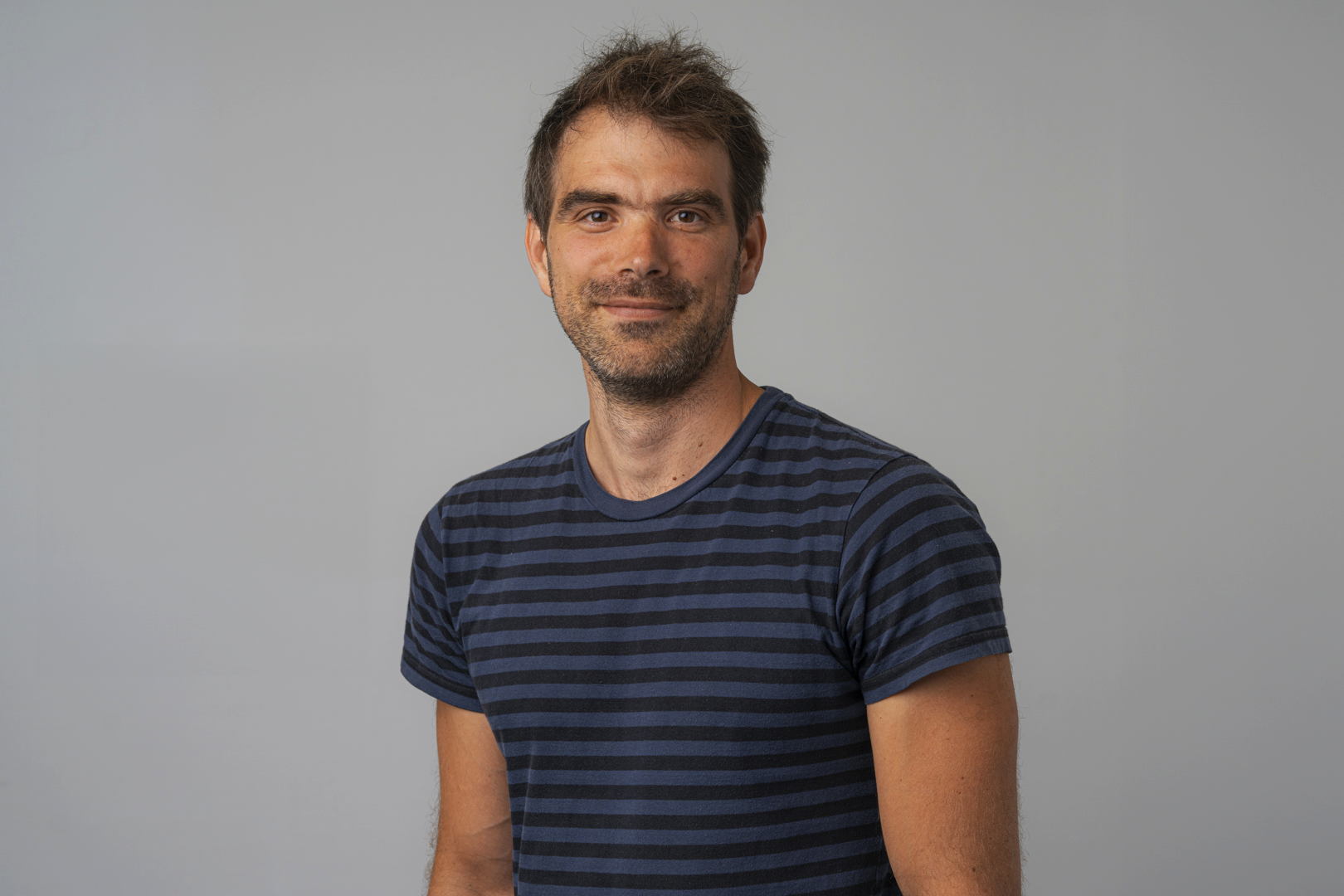Quentin Geissmann
Research leader

Project title
Experimental metaphenomics, an AI-inspired paradigm to reveal plants’ response surfaces
What is your project about?
Plants grow in a large range of environments and variables such as light, temperature and nutrients largely constrain their performance. However, it has proven extremely hard to describe and predict plants’ responses given the time and space it takes to grow them and the large number of environmental variables. My project uses a non-standard small and fast-growing aquatic plant, duckweed, grown in a custom-made miniature 3D-printed growth chamber. Using AI-inspired techniques, the chambers automatically update their environments to comprehensively model how different variables affect growth.
How did you become interested in your particular field of research?
Scientists, including myself, often ask a question and then create a set of tools or experiments to corroborate their hypothesis. Therefore, we often consider methods as "epistemologically secondary". Throughout my career, I have tried to take a reverse approach by realising that a new tool very often sparks original hypotheses. Much like, to a kid with a hammer, everything is a nail, methods and biological models constrain our creativity. As a result, I have worked at the boundary between biology and technology and focused on simple, scalable tools that pushed conceptual boundaries. I applied this approach to build small robots that study sleep in insects, or cameras to monitor insects in the field, and had been eager to translate this principle to plant biology.
What are the scientific challenges and perspectives in your project?
I anticipate two main challenges in my project. First, I will be working with an atypical model organism, duckweed (Lemna). Although, on paper, this model has tremendous potential (it is very small, and grows quickly), it is not yet widely used by other biologists, which will make it difficult to troubleshoot and integrate knowledge from conventional plants. Second, I propose an AI-inspired method to iteratively explore the "response surface" of plants in a multidimensional environment. This approach presupposes that plants have little or no "memory" of their past environment. However, we expect this assumption could fail, which would make our project pivot towards plants' epigenetic memory of past environments. After addressing these challenges my project could provide novel perspectives to plant biologists by promoting a novel experimental paradigm in which model plants can be grown at large scale, which transcends my original questions.
What is your estimate of the impact, which your project may have to society in the long term?
Virtually all the food we eat is ultimately made by a plant. Since our food systems are being challenged by multiple factors (anthropogenic climate change, soil loss and population increase), it is crucial that we understand how plants respond to their environment. This will help us to both sustainably adapt crops and to protect their wild relatives. Furthermore, we are increasingly interested in using plants for novel, bioinspired solutions, which brings new constraints. For instance, the model plant I am using, duckweed, can be used to effectively uptake pollutants from wastewater and create renewable material and biofuel. My project will greatly facilitate the optimisation of such bio-circular processes.
Which impact do you expect the Sapere Aude programme will have on your career as a researcher?
I am incredibly grateful to receive the prestigious Sapere Aude: DFF-Starting Grant. This support will significantly impact my career by providing the resources needed to study underexplored aspects of plant biology. With this funding, I will be able to continue building a multidisciplinary and collaborative research team and mentor the next generation of scientists. We will delve into fundamental aspects of plant biology, aiming to advance our understanding and contribute to the broader scientific community as well as society as a whole. This opportunity not only enhances my research capabilities but also allows me to grow as a leader, for which I am profoundly thankful.
Background and personal life
I grew up in France before moving to the United Kingdom for my PhD, and to Canada for my postdoc. I first studied insect biology but was later inspired by one of my undergrad professors to learn and apply computational approaches to biology. I have, ever since, worked at the intersection between biology and computer sciences. I was delighted to move to Aarhus in 2022 to start my current position and intend to settle here. Besides science, I enjoy a problematically long list of hobbies including cooking, gardening, various crafts (such as knitting and woodwork) and sports (such as swimming and cycling).
View all research leaders here
Research institution
Aarhus University
Research field
Computational biology
City of your current residence
Aarhus
High school
Lycée Agricole Olivier de Serres, Quétigny, France
